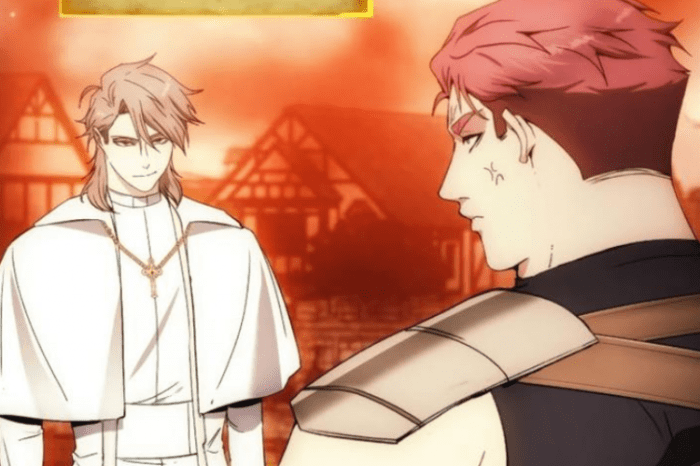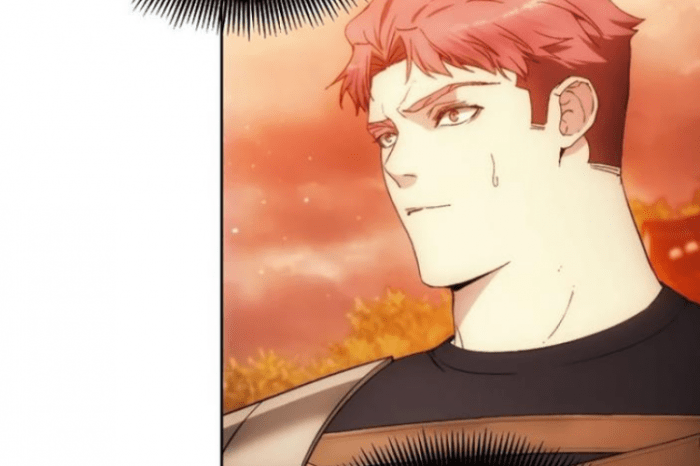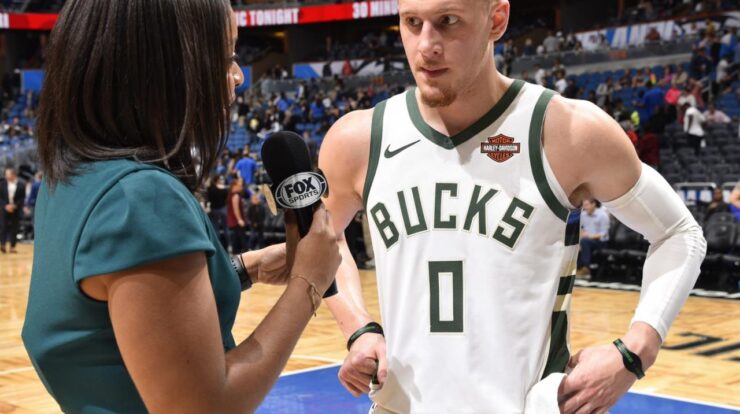
How to live as a villain ch 94 – In the intriguing world of villainy, Chapter 94 takes center stage, revealing the cunning strategies, complex motivations, and intricate conflicts that define a true villain. Join us as we delve into the depths of this captivating chapter, exploring the psychological aspects, character development, and captivating symbolism that bring the villain to life.
Prepare to be enthralled as we dissect the villain’s manipulative tactics, unravel their intricate backstory, and witness the impact of their actions on the narrative. This chapter promises an immersive journey into the mind of a villain, leaving you questioning the boundaries between good and evil.
Villainous Strategies and Tactics

In the captivating world of villains, strategy and cunning reign supreme. Successful villains employ a diverse array of tactics to outsmart and manipulate their adversaries. Chapter 94 of our literary exploration unveils the intricacies of these villainous machinations, providing a masterclass in the art of deception.
Psychological Manipulation
Villains often possess a keen understanding of human psychology, exploiting vulnerabilities to achieve their nefarious goals. They employ tactics such as gaslighting, intimidation, and emotional blackmail to instill fear and sow discord among their victims. By manipulating perceptions and undermining self-confidence, villains gain control and influence over their surroundings.
Cunning Deception
Deception is a cornerstone of villainous strategy. Villains create elaborate facades, concealing their true intentions behind a veil of charm or innocence. They use misdirection, false promises, and planted evidence to lead their adversaries astray. By manipulating information and creating confusion, villains gain an advantage and keep their plans hidden.
Ruthless Pragmatism
Successful villains are willing to make sacrifices and embrace ruthlessness to achieve their goals. They prioritize their objectives above all else, disregarding moral boundaries and personal relationships. This pragmatic approach allows them to execute their plans efficiently and eliminate any obstacles that stand in their way.
Strategic Alliances
Even the most cunning villains recognize the value of collaboration. They form strategic alliances with other villains or unsuspecting individuals who share their goals or can provide valuable resources. By pooling their strengths and exploiting each other’s weaknesses, villains increase their chances of success.
Character Development and Motivations
In Chapter 94, the villain’s character development takes a significant leap forward, revealing intricate motivations and a complex backstory that drive their actions. The narrative delves into the nuances of their personality, exposing both their vulnerabilities and their unwavering determination.
Motivations, How to live as a villain ch 94
The villain’s primary motivation stems from a deep-seated desire for revenge. Driven by a traumatic past marked by betrayal and injustice, they seek retribution against those who have wronged them. This thirst for vengeance fuels their actions, shaping their strategies and fueling their ruthless pursuit of power.
Backstory
The villain’s backstory unfolds gradually throughout the chapter, shedding light on the events that have molded their character. Their past experiences have left deep scars, creating a profound sense of loss and resentment. The narrative explores the pivotal moments that shaped their worldview, revealing the catalysts for their transformation into a formidable adversary.
Personality Complexities
The villain’s personality is a tapestry of contradictions. They possess a ruthless exterior, capable of inflicting unimaginable cruelty, yet beneath this facade lies a hidden vulnerability. Moments of doubt and self-reflection reveal a flicker of humanity, hinting at the complexities that define their character.
The chapter masterfully captures the intricate interplay between their sinister ambitions and their lingering traces of compassion.
Yo, peep this, the latest drop in the how to live as a villain series, chapter 94, is straight fire. The main dude’s got a plan so cold it’ll make your spine tingle. Check it out, how to live as a villain ch 94 , and watch the baddie take over the world.
Conflict and Tension

Chapter 94 of “How to Live as a Villain” is rife with conflicts and tensions that drive the plot and shape the characters’ motivations. The villain, Alastor, masterfully exploits these conflicts to achieve his goals and create a sense of unease and suspense among the other characters.
Alastor’s Schemes
Alastor’s primary conflict stems from his desire to obtain the powerful artifact known as the “Aether Stone.” To this end, he manipulates the other characters, pitting them against each other and creating a sense of mistrust and paranoia. By playing on their fears and insecurities, Alastor is able to control their actions and turn them into pawns in his quest for power.
Yo, check it out, I got the scoop on how to live as a villain ch 94. This chapter is lit, fam. It’s all about how to be the baddest villain in the game. You’ll learn how to manipulate people, plan evil schemes, and strike fear into the hearts of your enemies.
So if you’re ready to take your villainy to the next level, click here to read how to live as a villain ch 94. You won’t regret it.
Impact on Other Characters
The conflicts and tensions created by Alastor have a profound impact on the other characters. The once-close-knit group of heroes is torn apart by suspicion and doubt, as they struggle to trust each other and discern who is truly loyal.
The tension between them reaches a boiling point when Alastor reveals his true intentions, forcing them to confront their own fears and make difficult choices.
Overall Plot
The conflicts and tensions in chapter 94 serve as a catalyst for the overall plot. They drive the characters’ actions, create a sense of urgency, and ultimately shape the outcome of the story. Alastor’s schemes force the heroes to question their beliefs and alliances, and ultimately determine the fate of the world.
Symbolism and Imagery: How To Live As A Villain Ch 94
Chapter 94 employs symbolism and imagery to enhance the villain’s characterization and establish the story’s atmosphere. These elements create a deeper understanding of the villain’s motivations and the consequences of their actions.
One prominent symbol is the color red, which represents danger, passion, and power. It is associated with the villain, symbolizing their volatile and unpredictable nature. The villain’s lair is described as a “crimson chamber,” reflecting their fiery and intense personality.
Imagery of Destruction
Imagery of destruction and chaos is prevalent throughout the chapter. The villain’s attacks are described as “a symphony of destruction,” evoking a sense of devastation and the villain’s ruthless nature. The use of metaphors, such as “the city crumbled like a sandcastle,” conveys the sheer power and impact of the villain’s actions.
Worldbuilding and Setting
Chapter 94 takes place in a sprawling metropolis known as Neo-Gotham. The city is a labyrinth of towering skyscrapers, neon-lit streets, and shadowy back alleys. It is a place where wealth and power coexist with poverty and crime.
The Impact of the Setting on the Villain’s Behavior and Motivations
The urban environment shapes the villain’s behavior and motivations in several ways. The anonymity of the city allows them to operate with impunity, while the constant hustle and bustle provide ample opportunities for them to blend in and escape detection.
The city’s social stratification also plays a role in the villain’s motivations. The vast gap between the rich and the poor breeds resentment and inequality, creating a fertile ground for criminal activity.
Yo, so you wanna be a villain, huh? Gotta respect the hustle. But hold up, you got gum disease? That’s wack. Check out how to cure gum disease without a dentist . It’s like a cheat code for your mouth.
Once you’re gum-free, get back to plotting your villainous schemes in “How to Live as a Villain Ch 94.”
The Impact of the Setting on the Overall Atmosphere and Tone of the Story
The setting of Neo-Gotham creates a sense of unease and uncertainty. The towering skyscrapers cast long shadows over the streets, creating a sense of claustrophobia and oppression. The neon lights and shadowy back alleys add to the city’s gritty and dangerous atmosphere.
Yo, check it out, homies. If you’re down for some villainous vibes, then hit up how to live as a villain ch 94 . It’s got all the dope tips on how to be the baddest villain in town. But remember, with great power comes great responsibility, so use those powers for evil wisely.
The overall tone of the story is one of moral ambiguity. The villain is not simply evil, but a product of their environment. The city’s corruption and inequality have twisted their sense of right and wrong, leading them down a path of darkness.
Last Word

As we conclude our analysis of Chapter 94, we are left with a profound understanding of the villain’s journey. Their strategies, motivations, and the conflicts they create have painted a vivid picture of the complexities that define a true villain.
This chapter has not only entertained but also challenged our perceptions, leaving us with a newfound appreciation for the art of villainy.
User Queries
What is the significance of the villain’s backstory in Chapter 94?
The villain’s backstory provides crucial insights into their motivations, shaping their actions and decisions throughout the chapter.
How does the villain manipulate others in Chapter 94?
The villain employs a range of manipulative tactics, including deception, intimidation, and psychological manipulation, to achieve their goals.
What are the key conflicts that drive the plot of Chapter 94?
Chapter 94 revolves around conflicts between the villain and the protagonist, as well as internal conflicts within the villain’s own psyche.





